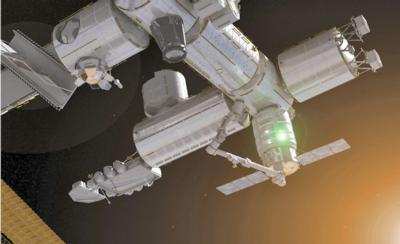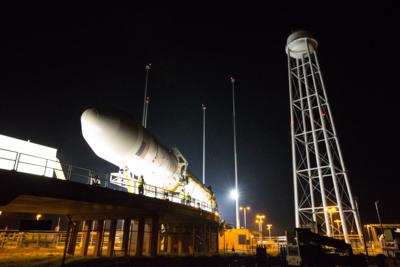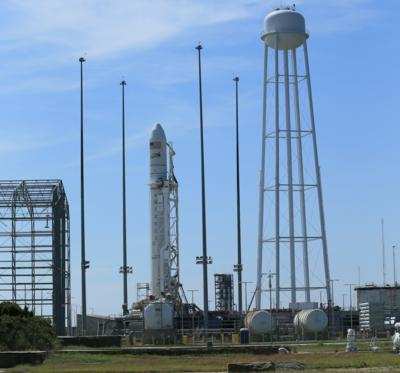Sun, Sep 15, 2013
Cygnus To Be First Spacecraft Launched To The Orbiting Laboratory From Virginia
Orbital Sciences Corp. of Dulles, Va., will postpone by at least 24 hours the launch of its Antares rocket and Cygnus spacecraft on a demonstration mission to the International Space Station from NASA's Wallops Flight Facility in eastern Virginia.

The new launch window is targeted for Wednesday, Sept. 18 between 10:50 to 11:05 a.m. EDT from the Mid-Atlantic Regional Spaceport Pad-0A at Wallops. Rendezvous with the space station remains scheduled for Sunday, Sept. 22.
The postponement is due to a combination of Friday’s poor weather, which delayed roll-out of Antares to the launch pad, and a technical issue identified during a combined systems test held Friday night involving communications between ground equipment and the rocket’s flight computer. The problem has been identified and corrected. The teams are working to understand why the problem occurred.
The company's Cygnus cargo carrier will be the first spacecraft launched to the orbiting laboratory from Virginia. The spacecraft will deliver about 1,300 pounds (589 kilograms) of cargo, including food and clothing, to the Expedition 37 crew aboard the space station. Future flights of Cygnus will significantly increase NASA's ability to deliver new science investigations to the nation's only laboratory in microgravity.

Orbital is the second of NASA’s two partners taking part in the agency's COTS program. The goal of this program is to develop safe, reliable, and cost effective cargo transportation systems. Orbital began its work in 2008. Following a successful demonstration mission, the company is poised to begin regular resupply missions. The other partner, Space Exploration Technologies (SpaceX), began its work in 2006, and after a successful test flight in 2012, began flying regular cargo missions to the space station.
During Cygnus' flight to the station, several of the spacecraft's systems and capabilities will be tested. After the space station flight control team has verified the results of these objectives, the spacecraft will be cleared to approach the station several days after launch. Cygnus will undergo more tests and maneuvers and ultimately will arrive beneath the outpost, where astronauts on board will use the station’s arm to capture the craft. They then will install it on the bottom side of the station’s Harmony module.

More News
Aero Linx: International Federation of Airworthiness (IFA) We aim to be the most internationally respected independent authority on the subject of Airworthiness. IFA uniquely combi>[...]
Ultrahigh Frequency (UHF) The frequency band between 300 and 3,000 MHz. The bank of radio frequencies used for military air/ground voice communications. In some instances this may >[...]
A Few Questions AND Answers To Help You Get MORE Out of ANN! 1) I forgot my password. How do I find it? 1) Easy... click here and give us your e-mail address--we'll send it to you >[...]
From 2019 (YouTube Edition): Learning To Paint Without Getting Any On Your Hands PPG's Aerospace Coatings Academy is a tool designed to teach everything one needs to know about all>[...]
Also: Sustainable Aircraft Test Put Aside, More Falcon 9 Ops, Wyoming ANG Rescue, Oreo Cookie Into Orbit Joby Aviation has reason to celebrate, recently completing its first full t>[...]
 ANN's Daily Aero-Linx (05.06.25)
ANN's Daily Aero-Linx (05.06.25) ANN's Daily Aero-Term (05.06.25): Ultrahigh Frequency (UHF)
ANN's Daily Aero-Term (05.06.25): Ultrahigh Frequency (UHF) ANN FAQ: Q&A 101
ANN FAQ: Q&A 101 Classic Aero-TV: Virtual Reality Painting--PPG Leverages Technology for Training
Classic Aero-TV: Virtual Reality Painting--PPG Leverages Technology for Training Airborne 05.02.25: Joby Crewed Milestone, Diamond Club, Canadian Pilot Insurance
Airborne 05.02.25: Joby Crewed Milestone, Diamond Club, Canadian Pilot Insurance





